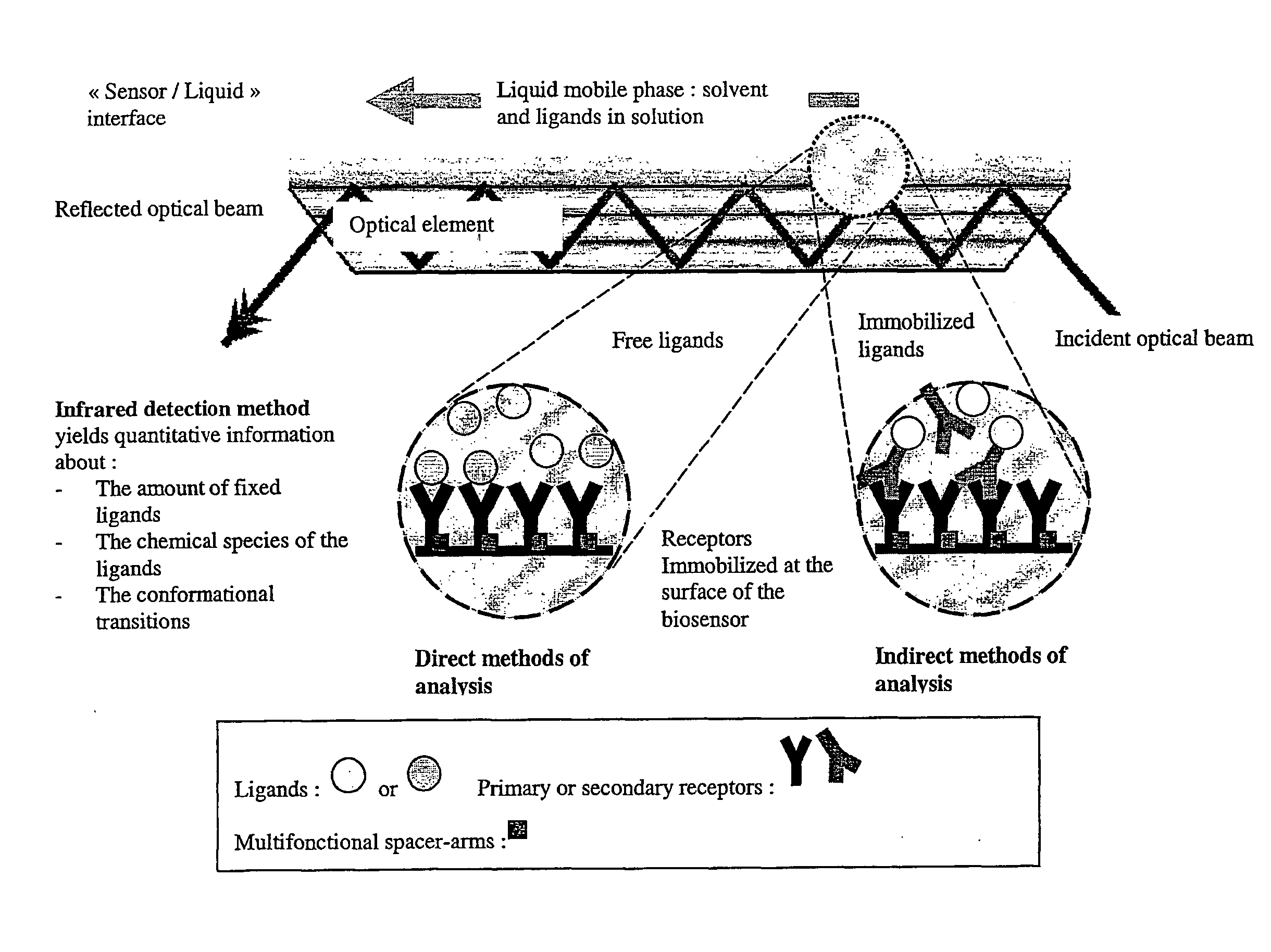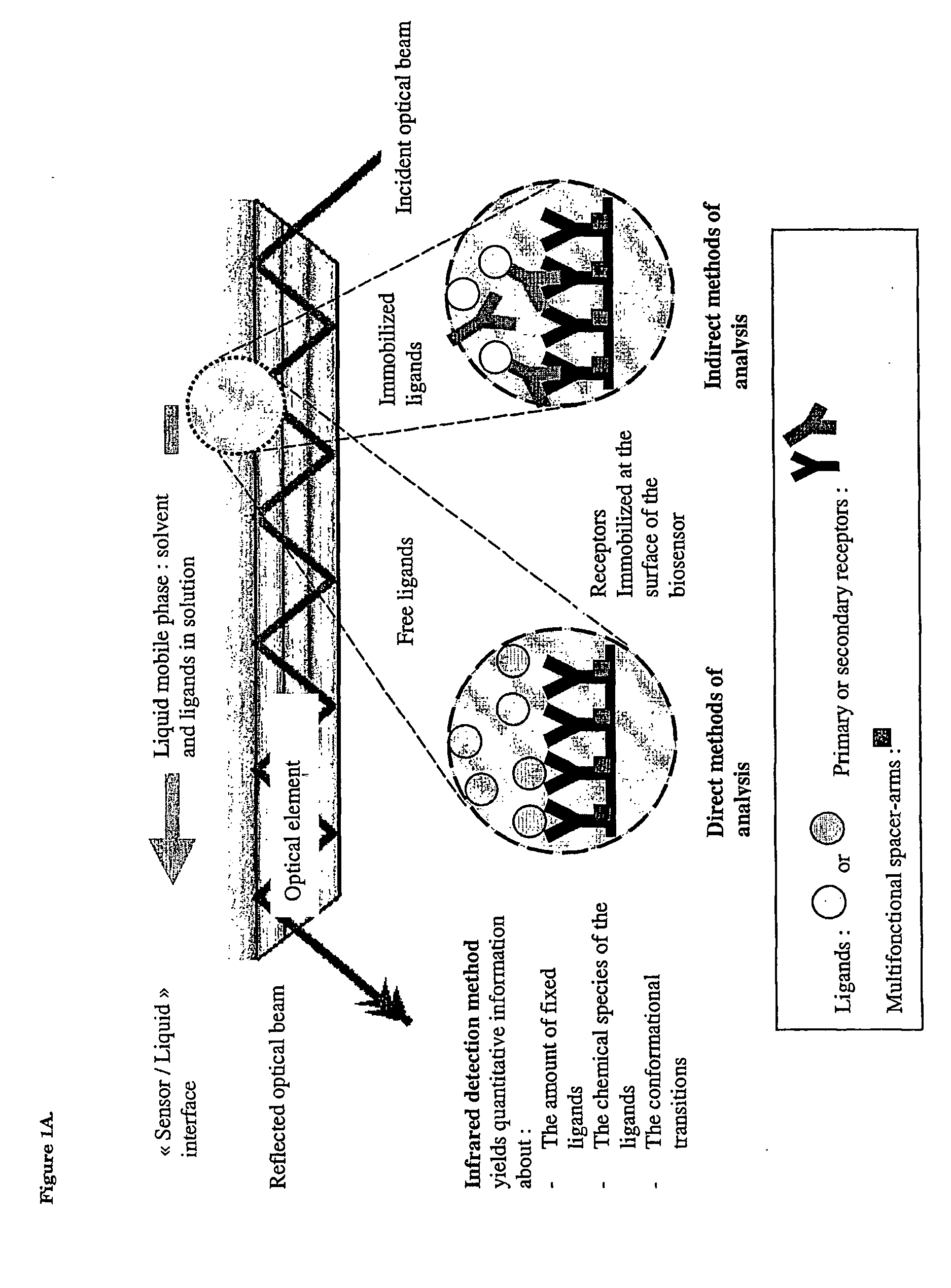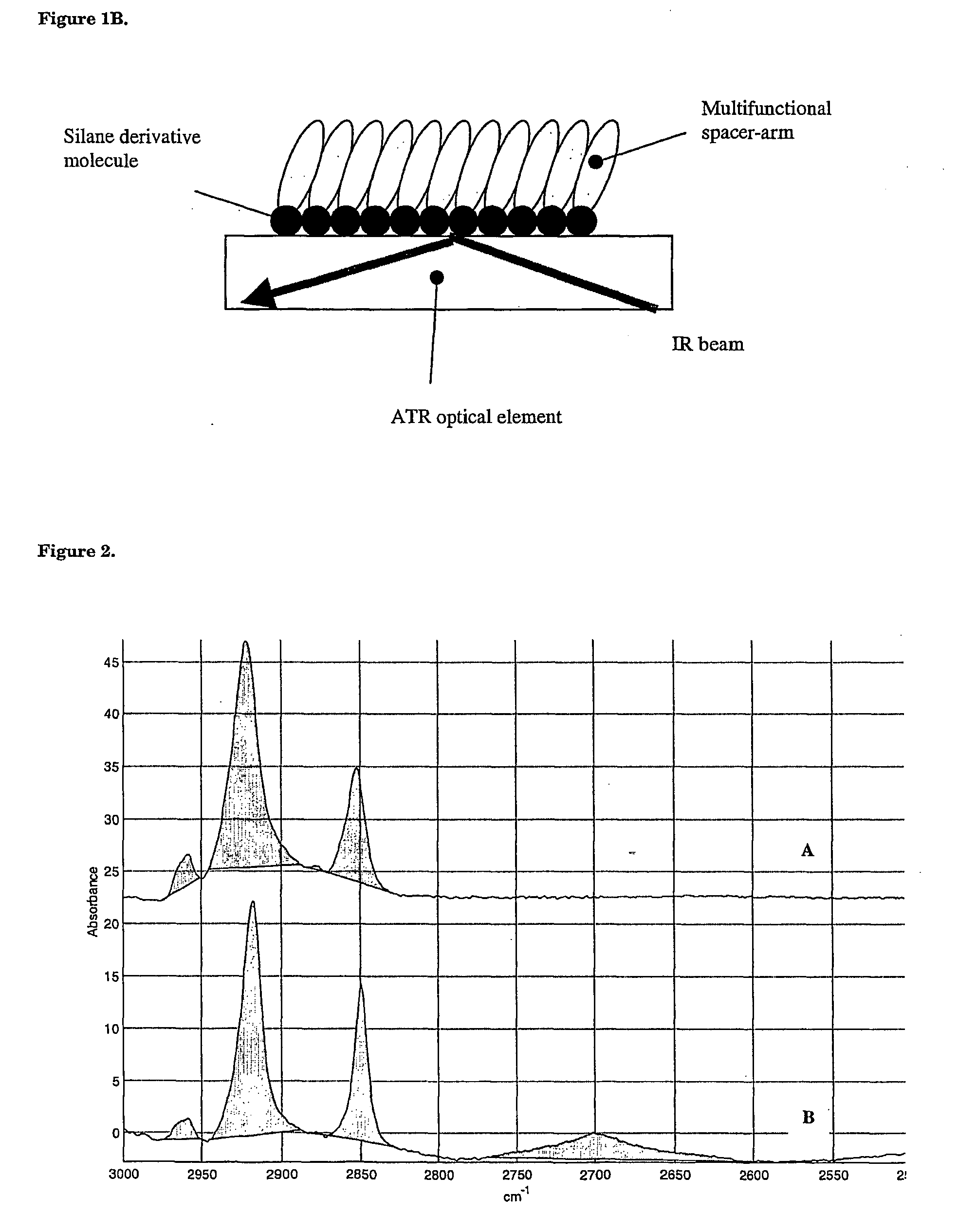Surface chemical modification of optical elements for the spectroscopic detection of molecules and organic components
a technology of surface chemical modification and organic components, which is applied in the direction of optical radiation measurement, instruments, color/spectral properties measurement, etc., can solve the problems of mass loading of the surface, limiting the possibility of surface detection, and drastic restriction of the possibility of detecting ligand-receptor interactions at the surfa
- Summary
- Abstract
- Description
- Claims
- Application Information
AI Technical Summary
Benefits of technology
Problems solved by technology
Method used
Image
Examples
example 1
Surface Grafting of Molecules on a Germanium Crystal and their FTIR-ATR Detection
[0092] Step 1: Surface Activation
[0093] A germanium crystal was activated by surface treatment with an acid / oxidant mixture at elevated temperature. Typically, a sulfochromic mixture (8 g / l) at 90.degree. C. during 1 to 3 hours, preferably 3 hours, was used. The germanium crystal provided with an activated surface is then abundantly rinsed with milliQ-water and dried under a flux of nitrogen.
[0094] Step 2: Surface Grafting with Silane Derivatives
[0095] The activated germanium crystal of step 1 was exposed to ozone and UV radiation (in an oven) for 30 min, then treated with a solution of alkyl trichlorosilane or alkyl trialkoxysilane in toluene at 20.degree. C. Typically, octadecyl trimethoxysilane (0.05 to 4%, preferably 0.5% in toluene) was reacted during 1 to 16 h, preferably during 2 h to furnish a grafted layer of 4.5 nm in depth (as measured by ellipsometry), corresponding to a water contact angle ...
example 2
Surface Grafting of Molecules and Functionalized Spacers on a Silicon Crystal and their FTIR-ATR Detection (Method A)
[0098] Step 1: Surface Activation
[0099] A silicon crystal was surface-activated by treatment with an acid / oxidant mixture at high temperature. Preferably, H.sub.2SO.sub.4 / H.sub.2O.sub.2 in ratio 7 / 3 (v / v) at 150.degree. C. during 8 min was used.
[0100] Similarly, the crystal was surface-activated by immersion during 5 minutes in a mixture composed out of NH.sub.4OH (25%), oxygenated water H.sub.2O.sub.2 (30%) and MilliQ H.sub.2O in a ratio 1 / 1 / 5 (v / v), heated up to 80.degree. C. and during agitation, followed by rinsing with MilliQ H.sub.2O and finally an immersion during 5 minutes in a mixture composed out of HCl (15M), H.sub.2O.sub.2 (30%) and MilliQ H.sub.2O in a ratio 1 / 1 / 5 (v / v), heated up to 80.degree. C. during agitation.
[0101] The silicon crystal provided with an activated surface is then abundantly rinsed with MilliQ H.sub.2O and dried under a flux of nitrogen...
example 3
Surface Grafting of Molecules and Functionalized Spacers on a Germanium Wafer and their Detection by Ellipsometry
[0109] Step 1: Surface Activation
[0110] A germanium wafer was activated by surface treatment with a acidic / oxydant sequence at low temperature. Typically, sequences similar to the following one were used: (a) HF(48%) diluted in water (final concentration between 1% and 20%, preferably 10%), during 1 to 600 seconds, preferably 10 seconds, at 15.degree. C. to 25.degree. C., preferably 20.degree. C. and (b) H.sub.2O.sub.2 (30%) diluted in water (final concentration between 1% and 20%, preferably 10%), during 1 to 600 seconds, preferably 15 seconds, at 15.degree. C. to 25.degree. C., preferably 20.degree. C. The sequence (a), (b) was repeated between 2 and 10 times, preferably 3 times. The germanium wafer provided with an activated surface is then abundantly rinsed with milliQ-water and dried under a flux of nitrogen.
[0111] Step 2: Surface Grafting with Silane Derivatives
[011...
PUM
 Login to View More
Login to View More Abstract
Description
Claims
Application Information
 Login to View More
Login to View More - R&D
- Intellectual Property
- Life Sciences
- Materials
- Tech Scout
- Unparalleled Data Quality
- Higher Quality Content
- 60% Fewer Hallucinations
Browse by: Latest US Patents, China's latest patents, Technical Efficacy Thesaurus, Application Domain, Technology Topic, Popular Technical Reports.
© 2025 PatSnap. All rights reserved.Legal|Privacy policy|Modern Slavery Act Transparency Statement|Sitemap|About US| Contact US: help@patsnap.com



